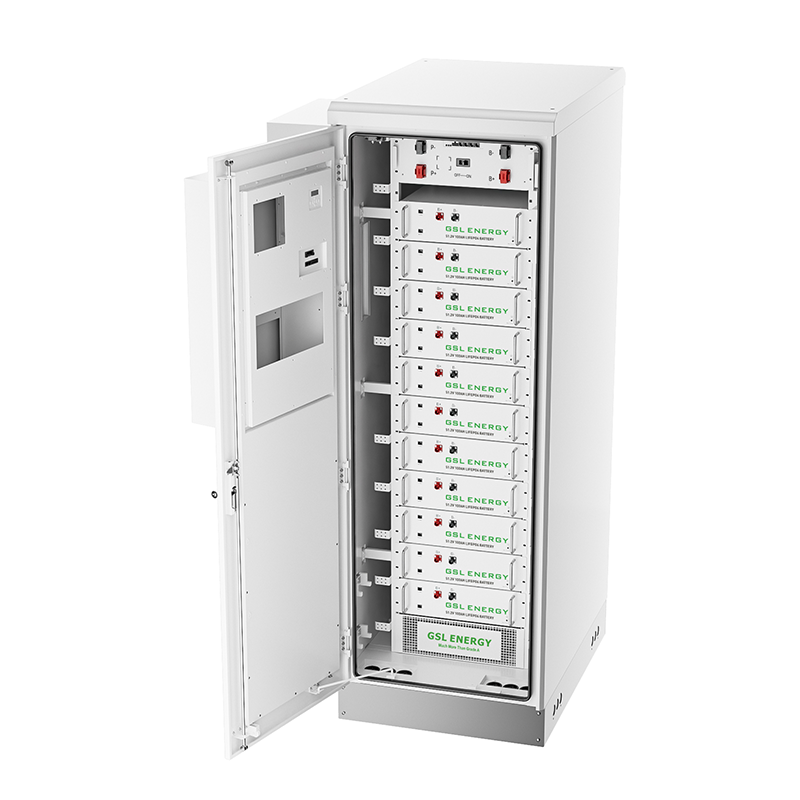What is Bess Battery Energy Storage System
Essential Components of Battery Energy Storage Systems
Battery Chemistry and Cell Configurations
When discussing battery energy storage systems (BESS), understanding the role of battery chemistry is paramount. Different chemistries, such as lithium-ion, lead-acid, and flow batteries, each have unique characteristics. Lithium-ion batteries are preferred due to their high energy density and long life cycle, making them suitable for large-scale applications such as grid storage and electric vehicles. In contrast, lead-acid batteries, known for their affordability, are often used for backup power solutions despite having a shorter lifespan. Flow batteries, while costly, offer the advantage of scalability and longevity, particularly in industrial applications.
The configuration of battery cells critically affects a BESS's performance metrics, including voltage, capacity, and discharge rates. Cells can be arranged in series or parallel to enhance different aspects of performance. For instance, series configurations increase voltage levels, whereas parallel arrangements boost capacity and current. Effective cell configurations are essential as they directly influence the overall system efficiency and reliability, ensuring that power delivery aligns with demand requirements.
Recent market analyses suggest a growing trend towards adopting lithium-ion and flow batteries in the BESS market, driven by the need for higher efficiency and longevity. Research reports, such as those by Wood Mackenzie, highlight that the advancement in battery chemistry innovations has significantly influenced market dynamics, pushing towards more sustainable and reliable solar battery backup systems.
Power Conversion System Architecture
Power conversion systems (PCS) serve as the backbone of any battery energy storage system, playing a pivotal role in managing energy flow between storage units, the grid, and the end load. Inverters and converters are integral components, as they convert direct current (DC) from batteries to alternating current (AC) suitable for our daily use and vice versa. Advanced PCS technologies aid in efficient energy management, significantly enhancing the overall efficiency of BESS.
There are mainly two topologies used in PCS architecture: centralized and modular systems. Centralized systems are often more affordable and simpler to manage but might face efficiency issues as they are less scalable. Modular systems, on the other hand, offer improved scalability and flexibility by allowing integration with additional modules as needed, which can enhance efficiency and accommodate diverse solar energy battery storage scenarios.
Recent industry statistics showcase remarkable improvements in conversion efficiencies, driven by continual advancements in PCS technologies. For instance, modular systems have shown to adapt swiftly to fluctuating grid demands, ensuring better efficiency in energy conversion processes across diverse applications and leading to enhanced demand forecasting capabilities.
Integrated Thermal Management Solutions
The importance of thermal management in battery energy storage systems cannot be overstated, especially when it comes to extending battery life and ensuring operational safety. Effective heat dissipation is vital to prevent overheating, a common cause of reduced battery lifespan and efficiency issues. Thermal management systems, therefore, play a crucial role in maintaining optimal operating temperatures for batteries, which is crucial for system reliability and safety.
Various cooling methods, such as air, liquid, and phase change materials, are employed to manage thermal loads. Each method has its advantages; for instance, air cooling is simple and cost-effective, while liquid cooling offers more effective heat transfer in high-performance scenarios. Phase change materials provide a passive cooling approach that can be advantageous in environments with temperature fluctuations.
Case studies demonstrate that efficient thermal management can significantly enhance the operational longevity of BESS. For example, a study conducted by the National Renewable Energy Laboratory indicates that liquid cooling systems can extend battery life by up to 25%, improving overall system reliability and efficiency. Such data-driven insights underscore the critical importance of integrating robust thermal management solutions into BESS for maintaining functionality across various environmental conditions.
Critical Operational Features in Modern BESS
Scalable Energy Capacity Options
Scalability in Battery Energy Storage Systems (BESS) allows for flexible deployment based on fluctuating energy demands, making it vital for both residential and commercial applications. By incorporating modular designs, BESS can easily adapt to changing requirements, facilitating the addition or reduction of units, hence avoiding the pitfalls of over or under capacity scenarios. Companies are actively implementing scalable BESS solutions, as seen in Tesla's Powerpack, which supports diverse energy needs by allowing businesses to stack units to suit evolving power demands.
Smart Grid Synchronization Capabilities
Smart grid synchronization involves the integration of technologies to enhance energy distribution and consumption efficiency. This is crucial for optimizing the grid's performance, especially with the rising emphasis on renewable energy sources. Technologies like IoT integration play a pivotal role by enabling real-time data management and predictive analytics for energy usage, leading to informed decision-making and enhanced grid stability. Pilot projects across the globe have demonstrated the effectiveness of synchronized BESS, revealing significant improvements in stability and efficiency, which are critical for the modern grid's requirements.
Sub-Second Response for Frequency Control
With the rising complexity of power networks, rapid response times for frequency regulation have become essential, and BESS provides a solution for real-time fluctuations in power quality. Advanced mechanisms in modern BESS ensure sub-second responsiveness, facilitating immediate support to the grid whenever needed. This quick response capability is vital for maintaining grid stability, especially during unexpected load changes or generation shortfalls. Insights from energy regulatory bodies highlight the impressive performance of modern BESS in frequency control, reflecting their growing importance in contemporary energy management systems.
Solar Energy Integration Capabilities
PV System Optimization Techniques
Optimizing photovoltaic (PV) systems is pivotal for maximizing the efficiency and output of solar energy plants. Techniques such as Maximum Power Point Tracking (MPPT) are crucial, as they dynamically adjust the electrical characteristics of the PV modules to ensure optimum power extraction under varying conditions. By integrating these methods with battery energy storage systems (BESS), the amount of solar energy captured and stored is significantly increased, thus improving overall system performance. The result is an enhanced return on investment for both residential and commercial installations. Studies have shown that efficient PV optimization can lead to up to a 30% increase in energy capture, emphasizing the value of this integration.
Peak Shaving and Load Balancing
The concepts of peak shaving and load balancing are integral to reducing energy costs and enhancing grid performance. BESS plays a crucial role by storing energy during off-peak hours and discharging it during peak demand periods, thereby flattening the demand curve and reducing utility costs. Different strategies, such as time-of-use pricing and demand response programs, can be employed to implement these concepts in residential and commercial contexts. For instance, a case study from a leading utility company demonstrated a 20% cost savings in peak demand charges through effective BESS peak shaving strategies, highlighting not just cost benefits but also increased reliability for consumers.
Hybrid Renewable Configuration Support
Hybrid systems that integrate solar, wind, and other renewable energy sources with BESS provide unmatched energy resilience and reliability. These configurations ensure continued energy supply even when one source is unavailable, significantly enhancing energy security, especially during outages. The main benefit of such systems is their ability to deliver consistent energy despite the variability inherent in renewable sources, fostering greater energy independence. For example, a regional project in North America successfully implemented a hybrid setup using BESS, which resulted in a significant drop in energy costs and increased stability, proving the effectiveness and necessity of such integrated solutions.
GSL Energy's Advanced BESS Implementations
AIO BESS Mobile Solar Home System 30kVA/60kVA
The All-in-One (AIO) Battery Energy Storage System (BESS) by GSL Energy is designed to transform energy solutions with its flexibility and user-friendliness. This system is scalable and integrates seamlessly into existing setups, making it an excellent choice for various applications. The mobile solar home system configuration, tailored for rural electrification and disaster recovery efforts, provides an efficient and reliable power source where traditional grids are absent or compromised. Customers have praised the system's reliability and performance, with testimonials highlighting its robust design and exceptional energy storage capacity. Learn more about the GSL AIO BESS mobile solar home system.
Liquid Cooling All-in-One Cabinet Solutions
GSL Energy's liquid cooling technology in their Battery Energy Storage Systems (BESS) offers significant advantages in thermal management and efficiency. This cooling method allows for better heat dissipation compared to traditional air-cooled systems, ensuring optimal performance even under heavy operational conditions. By utilizing liquid cooling, GSL Energy enhances system reliability and extends the lifecycle of batteries through consistent temperature control. Their liquid-cooled solutions stand out for providing superior energy efficiency improvements, reducing the risk of overheating and associated maintenance costs. These innovations elevate GSL Energy’s offerings above conventional models, presenting a more sustainable energy storage solution. Discover more about the Liquid Cooling All-in-One BESS Cabinet Solutions.
Performance Advantages Across Applications
Commercial Backup Power Reliability
Battery energy storage systems (BESS) have become integral to enhancing backup power reliability across various commercial sectors. Businesses from data centers to manufacturing units rely on the uninterrupted power supply facilitated by BESS during outages. Technologies like lithium-ion batteries ensure rapid deployment, switching from standby to full power almost instantly. This swift transition minimizes downtime and maintains productivity. According to industry reports, organizations that have integrated BESS for backup power have seen up to a 50% reduction in downtime, resulting in significant cost savings and operational continuity.
Utility-Scale Renewable Stabilization
In utility-scale applications, BESS play a pivotal role in stabilizing renewable energy generation. These systems effectively balance fluctuations in power output, maintaining grid frequency and reliability. By storing solar or wind energy produced during peak times, BESS ensure a stable supply during low production periods. Techniques such as peak shaving and load leveling significantly enhance the integration of BESS with renewable sources. For instance, projects using integrated BESS have reported consistent alleviation of grid instability, reinforcing the viability of renewable energy on a large scale and fostering a more sustainable power grid.
Microgrid Energy Independence
Microgrids equipped with BESS are revolutionizing energy independence, particularly in remote areas. By storing energy locally, microgrids can operate autonomously, reducing reliance on centralized power systems. This autonomy is critical in supporting community resilience, particularly in regions prone to power disruptions. The benefits of microgrids include improved energy security and sustainability, as they utilize local renewable resources. Real-world examples show that communities adopting microgrid solutions with BESS, like those in remote parts of Alaska, have dramatically improved their energy resilience and reduced their carbon footprint, leading to sustainable development.




